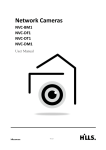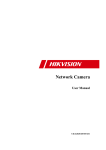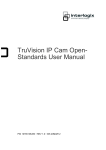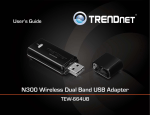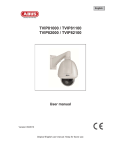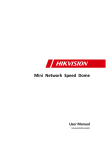Download User-Manual - Newegg.com
Transcript
TRENDnet User’s Guide Table of Contents Contents Product Overview .................................................................................. 3 Package Contents .......................................................................................................... 3 Features ......................................................................................................................... 3 Maintenance .................................................................................................................................... 22 Network Settings ......................................................................................................... 23 TCP/IP .............................................................................................................................................. 23 Port .................................................................................................................................................. 24 DDNS ................................................................................................................................................ 24 Cables ............................................................................................................................ 4 PPPoE ............................................................................................................................................... 25 Warnings: ....................................................................................................................... 5 SNMP ............................................................................................................................................... 25 Cautions: ........................................................................................................................ 5 802.1X .............................................................................................................................................. 27 Plan for Installation ............................................................................... 5 IP Address Filter ............................................................................................................................... 27 Setup Camera with CD ........................................................................... 6 QoS, Quality of Service .................................................................................................................... 28 Access Camera through the Web Browser ............................................. 8 System Management and Default Settings .................................................................. 8 Logging‐in to the Camera .............................................................................................. 8 UPnP ................................................................................................................................................ 28 Video Settings .............................................................................................................. 29 Video Format ................................................................................................................................... 29 Audio................................................................................................................................................ 30 Basic Settings ....................................................................................... 10 Display Settings ................................................................................................................................ 30 Live View ...................................................................................................................... 10 On Screen Display (OSD) Settings .................................................................................................... 34 Presets ............................................................................................................................................. 11 Text Overlay ..................................................................................................................................... 34 Patrols ............................................................................................................................................. 13 Video Recording ............................................................................................................................... 35 Pattern ............................................................................................................................................. 14 Events .......................................................................................................................... 36 Playback ....................................................................................................................... 15 Motion Detection ............................................................................................................................ 36 Log ............................................................................................................................... 17 Tamper‐proof ................................................................................................................................... 38 System ......................................................................................................................... 18 Exception ......................................................................................................................................... 40 Advanced Settings ................................................................................ 18 Snapshot .......................................................................................................................................... 40 System ......................................................................................................................... 18 Device Settings ................................................................................................................................ 18 User Accounts .................................................................................................................................. 19 Time Settings ................................................................................................................................... 20 Daylight Savings ............................................................................................................................... 20 Live View Settings ............................................................................................................................ 21 Email ................................................................................................................................................ 41 Storage ........................................................................................................................ 42 Storage Management ...................................................................................................................... 42 Network Storage .............................................................................................................................. 42 FTP Server ........................................................................................................................................ 43 Pan/Tilt/Zoom (PTZ) Settings ....................................................................................... 44 © Copyright 2014 TRENDnet. All Rights Reserved. i TRENDnet User’s Guide Table of Contents Basic ................................................................................................................................................ 44 Limit ................................................................................................................................................. 45 Initial Position .................................................................................................................................. 46 Park Action ...................................................................................................................................... 46 Private Mask .................................................................................................................................... 47 Schedule Tasks ................................................................................................................................ 47 Clear Config ..................................................................................................................................... 48 Troubleshooting ................................................................................... 49 © Copyright 2014 TRENDnet. All Rights Reserved. ii TRENDnet User’s Guide TV‐IP450PI Features Product Overview TV‐IP450PI TRENDnet’s Outdoor 1.3 MP HD PoE IR Speed Dome Network Camera, model TV‐IP450PI, offers powerful 20x optical zoom, 100 m (330 feet) night vision, an IP66 weather rating, and continuous 360 degree PTZ functionality. Record 1.3 Megapixel HD video (1280 x 960) at 30 fps in a space saving H.264 compression format. Manage up to 32 TRENDnet cameras with included complimentary software and mobile apps. A separate mounting bracket is required—install with TRENDnet’s TV‐HC400, TV‐HW400, TV‐HP400, or TV‐
HN400. 1.3 Megapixel HD Record 1280 x 960 at 30 fps in the space saving H.264 compression format Multi‐Language Interface TV‐IP450PI (Bracket not included) Package Contents In addition to your camera, the package includes:
TV‐IP450PI CD‐ROM (Software & User’s Guide) Multi‐Language Quick Installation Guide Installation gloves & waterproof tape PoE injector If any package contents are missing or damaged, please contact the retail store, online retailer, or reseller/distributor that the item was purchased from. Support for English, French, Spanish, German, and Russian Time and Text Stamp Enable time and additional identifying text stamp overlays Dynamic DNS Support Support for dyn.com andNO‐IP.org services Auto Patrol Choose pre‐defined or program up to eight auto patrol sequences with varying zoom levels Storage Record video to a Samba client or to a Micro SD card (up to 64 GB sold separately) © Copyright 2014 TRENDnet. All Rights Reserved. 3 TRENDnet User’s Guide D‐WDR (Not required when PoE injector is included) Improved image quality and autofocus in high contrast lighting environments with Digital Wide Dynamic Range technology Create motion detection windows with separate sensitivity settings and event triggers AC2
4V
AUDIO_OUT
AUDIO_IN
AUDIO_GND
4V
Network cable connection Recording Schedule Define a weekly recording schedule ONVIF ONVIF compliant AC2
Audio Line in, line out, and grounding wires Motion Detection Manage the camera individually through the web‐based interface RED
YEL
BLA LOW/G
CK
REE
N
Camera Management Connectors for AC power adapter IPv6 support Cables Receive tamper detection snapshots via email, ftp, or save to Samba client or Micro SD card IPv6 BLUE/WHITE
RED/WHITE
GREEN/WHITE
Tamper Detection TV‐IP450PI Complimentary Software Complimentary pro‐grade software to manage up to 32 TRENDnet cameras Complimentary Apps Live video to a mobile device with free Apple® and Android™ apps © Copyright 2014 TRENDnet. All Rights Reserved. 4 TRENDnet User’s Guide TV‐IP450PI Warnings:
It is recommended to use the PoE+ injector that comes with the camera or an IEEE 802.3at compliant PoE+ switch. If the product does not work properly, please contact your dealer or the nearest service center. Never attempt to disassemble the camera yourself. Disassembling the product will void the warranty and may cause harm or injury. The installation should be done by a qualified service person and should conform to all construction and electric regulations and other local codes. Cautions:
Make sure the power supply voltage is correct before using the camera. Do not drop the camera or subject to physical shock. Do not touch sensor modules with fingers. If cleaning is necessary, use a clean cloth with a bit of ethanol and wipe it gently. If the camera will not be used for an extended period of time, put on the lens cap to protect the sensor from dirt. Do not aim the camera lens at the strong light such as the Sun or an incandescent lamp. Strong light can damage the camera sensor. The sensor may be burned out by a laser beam, so when any laser equipment is being used, make sure that the surface of the sensor will not be exposed to the laser beam. Do not place the camera in extremely hot, cold temperatures (the operating temperature should be between ‐30°C to 65°C), dusty or damp environment, and do not expose it to high electromagnetic radiation. To avoid heat accumulation, good ventilation is required for a proper operating environment. While shipping, the camera should be packed in its original packing. Use water proof tape to cover all the wires, cables which will be exposed outdoor after the camera installation.
Plan for Installation There are a number of factors involved in successful camera installation. Follow the suggested installation steps and go through the check lists. This guide will help you to make your camera installation smooth and easy. Setup Your Camera with CD Plan for installation location Selecting the appropriate mounting accessories, see Mounting Guide Viewing angle
The camera is a vari‐focal camera with a wide viewing range that provides non‐
distorted and detailed images. Choose the location where has good angle to shoot the image you expect to see. The motion detection area should also be considered when installing the camera. Weather Conditions
The camera is an outdoor dome camera, which fits most installations indoor and outdoor. The camera can work under a wide range of weather conditions. For severe weather conditions. Using the camera in milder weather conditions will help extend the camera’s life and preserve the quality of the camera image. Moisture: Avoid damp or moist environments whenever you can. The camera is an IP66 grade water proof camera, and it will work in moist environments. However, rain may affect the picture quality, especially at night, water may reflect the light from the infra‐red illumination and degrade picture quality. Temperature: Camera works within a specified temperature range. Areas with severe temperatures should be avoided when installing the camera. It’s recommended that you use an enclosure with a heater and blower if you plan on using this camera outside of the specified temperature range. © Copyright 2014 TRENDnet. All Rights Reserved. 5 TRENDnet User’s Guide
Sunlight: Avoid direct sun light exposure. Direct sun light will damage the image sensor. If sunlight is necessary for your viewing purposes, provide protection for the image sensor. TV‐IP450PI Setup Camera with CD 1.
Lighting: Consider installing your camera faces the same direction of the light sources. Shooting images with top‐down position outdoor or next to the existing light source are good choices. Avoid the light source if it creates a shade that darkens the viewing area. Insert the Installation CD‐ROM into your computer’s CD‐ROM drive to initiate the Auto‐Run program. Choose your preferred language and then click the Install Camera. (mounting accessories are not included) 2.
Write down the MAC Address of the camera. © Copyright 2014 TRENDnet. All Rights Reserved. 6 TRENDnet User’s Guide TV‐IP450PI 3.
new installation*. The password must be between 8 and 16 characters. (Alphanumeric: a‐z, A‐Z, 0‐9, !, @, #, $). Connect the power/network cable *This camera installation wizard is also good for finding the camera if it was setup with DHCP. The IP address may change dynamically with the DHCP setting. If you want to access your camera again and you don’t know the IP address, you can run this camera installation wizard again. If you have already setup the password and want to keep the password unchanged, un‐check the Change Password box and click next to get the link to access your camera.) ** Please save the password for future references. This device does not have a hardware reset function for temper proof purpose. 9.
4.
5.
Wait while the utility is searches for the camera. The installation wizard will list cameras found on your network. If only one camera is found, it will be selected by default. If you have more than one camera on the network, please choose the camera you wish to set up by identifying its MAC address. Select the camera and then click Next. Click here to access to the camera’s web page or click Next for mobile app installation. 6.
Select the DHCP option to assign IP address dynamically, or select Fixed IP to assign the camera an IP address, then click Next. 7.
If you select Fixed IP, enter the IP address, subnet mask, default gateway, and DNS server address. Please make sure the IP address you are setting on the camera is in the same network of the computer that you are using. Click Next. 10. Click Finish to exit the program or click Home to return to the main screen. You can also download a free app to view video on your mobile devices. Scan the QR code to find and install the TRENDnetVIEW app. 8.
Enter a new password. The default password is admin. You are required to change the password from the default setting to prevent unauthorized access. Enter the default password: admin and enter the new passwords for a brand © Copyright 2014 TRENDnet. All Rights Reserved. 7 TRENDnet User’s Guide TV‐IP450PI Access Camera through the Web Browser Logging‐in to the Camera System Management and Default Settings 1.
It is recommended that you install your camera with the CD that comes with the package and use accompanying TRENDnetVIEW Pro software for Windows computers. If you do not have the CD with you, please go to http://www.trendnet.com/support and enter the model number and download the software. If you didn’t go through the CD installation wizard or you have reset the camera, your camera has following settings: Management IP : 192.168.10.30 or a dynamic assigned address if you connect the camera to your existing network Administrator name : admin Administrator password : admin Open the web browser on your computer. In the address bar, enter the IP address you setup through the setup CD or 192.168.10.30. (If you have a DHCP server on your network, the IP address will be assigned dynamically. For example, if you have a home gateway on your network and you plug‐in the camera on the same network, you can find the camera’s IP address on your home gateway.), and then press Enter. 2.
Enter the user name, admin, and the password you setup through the setup CD or the default password, admin, and then click OK. If you want to access your camera directly instead of using software, you can follow the steps specified in this chapter to login to your camera. A web browser plug‐in must be installed to view live image. If the camera was not setup through the CD and you are accessing it the first time, you will be prompted to change password automatically. © Copyright 2014 TRENDnet. All Rights Reserved. 8 TRENDnet User’s Guide 3.
TV‐IP450PI The camera management page will detect if you installed the camera video streaming plug‐in or not. Click the link to download the plug‐in from the camera. 4.
Click Next to install the plug‐in. 5.
Click Finish to finish the installation. Permission request depends on the Internet security settings of your computer. Click Run to install the plug‐in. Note: for Mac systems, the plug‐in file is stored on the CD or you can download the latest version from http://www.trendnet.com/downloads/camera/mac/WebComponents.zip © Copyright 2014 TRENDnet. All Rights Reserved. 9 TRENDnet User’s Guide 6.
TV‐IP450PI Open the browser and login again. Allow the plug‐in from TRENDnet if prompted. The Live View page will show and begin streaming video. Multi‐Language Change your preferred language anytime Snapshot Click this icon to take a video snapshot Zoom Click once to enable zoom. Then, click and drag the area on the picture to zoom in. Click once on picture for 100% zoom. Click the icon again to disable zoom. The zoom function works in full screen mode as well Recording Click once to start recording. Click it again to stop recording. The status bar will indicate if it is in recording state or not Video Stream The camera has two video streams: H.264 and MJPEG. Switch to view the different video streams by clicking this icon 3D Zoom Click the position of the live video, the corresponding position will be moved to the center of the live feed. Click and hold the mouse for a desire portion of the live image, then that position will be moved to the center of the live feed 2‐way Audio Click to enable 2‐way audio Full Screen Mode Click the picture to view in full screen mode. Double click again or press escape key on your keyboard to exit full screen mode Basic Settings Live View After you log‐in into the camera management page, you’ll see the Live View page. © Copyright 2014 TRENDnet. All Rights Reserved. 10 TRENDnet User’s Guide TV‐IP450PI The status bar shows the status you are at, including enabled the zoom, recording video, and successfully taking a snapshot Status Bar The icon expands the PTZ control panel Pan / Tilt / Zoom control panel Zoom in / out Focus close / far Iris open / close 2.
• Pan the speed dome to the right or left. Speed of pan/tile movement Presets • Tilt the speed dome up or down. • Zoom in or out. Use the presets panel to move to previously saved locations • Refocus the lens. 3.
Presets Configure a Preset position A preset is a predefined image position. For the defined preset, you can click the Call button to quickly view the desired image position. 1.
Use the PTZ control buttons to move the lens to the desired position. In the PTZ control panel, select a preset number from the preset list. 4.
Click to finish the setting of the current preset. You can click to delete the preset. You can configure up to 256 presets. © Copyright 2014 TRENDnet. All Rights Reserved. 11 TRENDnet User’s Guide TV‐IP450PI Calling a Preset position In the PTZ control panel, select a defined preset from the list and click preset. to call the 42 Call pattern 2 103 Call patrol 6 43 Call pattern 3 104 Call patrol 7 44 Call pattern 4 105 Call patrol 8 45 One‐touch patrol 92 Start to set limit stops The following presets are predefined with special commands. You can only call them but not configure them. For instance, preset 99 is “Start auto scan”. If you call preset 99, the speed dome starts auto scan function. Special Preset Function Special Preset 33 Auto flip 93 Set limit stops manually 34 Back to initial position 94 Remote reboot 35 Call patrol 1 96 Stop a scan 36 Call patrol 2 97 Start random scan 37 Call patrol 3 98 Start frame scan 38 Call patrol 4 99 Start auto scan 39 IR cut filter in 100 Start tilt scan 40 IR cut filter out 101 Start panorama scan 41 Call pattern 1 102 Call patrol 5 Function Note: When you call preset 45 (one‐touch patrol), the speed dome patrols from presets 1 to 32. Before you enable this function, please set presets 1 to 32 first. © Copyright 2014 TRENDnet. All Rights Reserved. 12 TRENDnet User’s Guide TV‐IP450PI Patrols 5.
6.
A patrol is a memorized series of preset functions. It can be configured and called on the patrol settings interface. There are up to 8 patrol available for customization. A patrol can be configured with 32 presets. Repeat the steps from 3 to 5 to add more presets. Click to save all the patrol settings. Calling a Patrol route Configure a Patrol route 1.
In the PTZ control panel, click 2.
Select a patrol number from Click to enter the patrol settings interface. In the PTZ control panel, select a defined patrol from to call the patrol. and click . to add a preset to a patrol path. Buttons on the Patrol interface: 3.
Configure the preset number, patrol time and patrol speed. Description Save a patrol Name Description Call a patrol Patrol Time This is the duration the camera stays on one patrol point. The speed dome moves to another patrol point after the patrol time. Stop a patrol Patrol Speed This is the speed that the camera moves in between patrol points. 4.
Buttons Click to save a preset into the patrol. Add a preset to a patrol path Modify a preset Delete a preset Delete all the presets in the selected patrol path © Copyright 2014 TRENDnet. All Rights Reserved. 13 TRENDnet User’s Guide TV‐IP450PI Pattern A pattern is a memorized series of pan, tilt, zoom, and preset functions. A pattern can be called in the pattern settings interface. There are up to 4 patterns available for customization. 5.
Click to save the pattern settings. Buttons on the Patterns interface: Buttons Description Configure a Pattern 1.
2.
In the PTZ control panel, click to enter the pattern settings interface. Select a pattern number from the list as shown in Error! Reference source not found.. Start recording a pattern. Stop recording a pattern. Call the current pattern. Stop the current pattern. Delete the current pattern. These 4 patterns can be operated separately and with no priority level. When configuring and calling the pattern, proportional pan is valid; the limit stops and auto flip will be invalid; and the 3D positioning operation is not supported. Patterns Settings Interface 3.
4.
Click to enable recording the panning, tilting and zooming actions. Use the PTZ control buttons to move the lens to the desired position after the information of PROGRAM PATTERN REMAINNING MENORY (%). • Pan the speed dome to the right or left. • Tilt the speed dome up or down. • Zoom in or out. • Refocus the lens. © Copyright 2014 TRENDnet. All Rights Reserved. 14 TRENDnet User’s Guide TV‐IP450PI Playback Time line You can playback the video recording on the network storage and download the video clip and snapshots to your local computer. There is a playback head in the center of the time line represented by a yellow vertical line. To look for a specific video recording, move the time line by clicking and dragging it. If the recording is short, zoom in by clicking to zoom out the time button. Click scale. If you know the exact time of the day you are looking for, click then enter the time you want to playback. Different types of recordings are identified differently. The scheduled recordings are marked in blue, and the recordings triggered by motion detection are marked in red. Click and drag the time line to move your time manually
Click this button to zoom in the scale
Click this button to zoom out of the scale
Click this button to specify a specific time of the day.
Search for video recordings Click the date selection, and then choose a date for the date range of your recording. Click Search to start searching. then click to confirm selection and then click X to close this dialog box. © Copyright 2014 TRENDnet. All Rights Reserved. 15 TRENDnet User’s Guide TV‐IP450PI Click this button to take a snapshot of current playback
Play video Use playback controls to play back the video recordings. Click this button to start clipping a video from playback
Click this button to stop clipping a video from playback
Click this button to play the video Click this button to pause video playback Click this button to stop playback Click this button to increase playback speed* Download sections of a video To save complete video sections or snapshots, you can download the files directly. Click this button to decrease playback speed* Click to playback video frame by frame. Click again for the next frame. *There are 5 steps of playback speeds. You can choose from 1/4, 1/2 , 1, 2, and 4 times of original speed. Click this button to download video sections Take Images from a video playback You can take snapshots from playback video or make new video clips from the video you are playing back. Click this button to enable zoom. Then click and drag on the video to define the area you want to zoom in. Click again to get back to 100% zoom. Double click to show video in full screen and press ESC on keyboard to exit full screen mode Click this button to disable zoom © Copyright 2014 TRENDnet. All Rights Reserved. 16 TRENDnet User’s Guide TV‐IP450PI Download snapshots Log The log of the TV‐IP450PI will be saved on the network storage. You can search the relevant records and save to your local computer. Click this button to download snapshots Select the type of event that triggered the snapshots. Choose the Start Time and End Time. Then, click Search to find the snapshot list. Check the time of the snapshot, and then select the snapshots you want to download, then click Download. Note: Where can I find saved files? Videos and snapshots captured from Playback will save to your computer. Search for logs Click the type of log and then the Start Time and End Time. Click Search to start searching. Click First Page, Prev Page, Next Page, and Last Page to show the logs. Click Save Log to save the logs to your computer. © Copyright 2014 TRENDnet. All Rights Reserved. 17 TRENDnet User’s Guide TV‐IP450PI System Advanced Settings System Information page shows the camera basic information. Click System then click System Info to show the page. System Device Settings Setup your camera name and location for easy identification. This camera name will also be recognized by other network camera software as the name of this camera. OSD, On Screen Display, the camera name is setting up here as well. Basic Information Device Name: User defined device name Firmware Version: Firmware Version MAC Address: MAC address of the camera System Time: Display the system time Network Information IP Address: IP address of the camera Subnet Mask: Network range of IP address Default Gateway: Gateway for the camera Primary DNS: Primary DNS server address Secondary DNS: Secondary DNS server address Names Camera Name: Name of the camera. The camera name setup here can be discovered by other network camera © Copyright 2014 TRENDnet. All Rights Reserved. 18 TRENDnet User’s Guide software and OSD, On Screen Display. The default is the camera’s model name: Location: Label where you installed this camera
TV‐IP450PI User Accounts You can setup up to 16 user accounts to access the camera’s video stream with a web browser or real time video stream (RTSP). Only one administrator account can be setup to configure the camera and cannot be deleted. Authentication RTSP: Camera’s video stream can be accessed with RTSP, Real Time Streaming Protocol. Only the administrator and users can view this video stream. Un‐checking this box will allow everyone access to this video stream without authentication. Default: checked. HTTP: Camera can be accessed via password protected web management interface. Un‐checking this box will allow anyone to access this camera and change its settings. User Accounts Add: Click Add button to add one user account
Modify: To change a user’s name and password, highlight the user by clicking on it. Then, click Modify button. You can change the user’s name and password. You can also change the administrator’s password here. But, the administrator’s name is fixed, you cannot change that. Click OK to save the changes. © Copyright 2014 TRENDnet. All Rights Reserved. 19 TRENDnet User’s Guide TV‐IP450PI Time Settings The accuracy of the system clock is important for scheduling and accurate logging. You can synchronize the system time with your computer, or automatically check the time accuracy with a network time server (NTP server). Click the calendar icon and manually select the Set Time: date. Check the Sync. with computer time to copy the time from your computer. Click Save to save the changes
Daylight Savings Setup daylight settings for the camera. Daylight Saving Automatic Update Enable DST: Check this box if your time zone has daylight savings NTP Server: Specify a time server (NTP server) to synchronize with. (e.g. pool.ntp.org) Start Time: Enter the date that daylight savings starts
Interval: The time interval that the camera will synchronize the time with NTP server. Default: 1440 minutes (24 hours). End Time: Enter the date that daylight savings ends
DST Bias: Enter how much time the daylight saving adjusted by daylight savings Click Save to save the changes Click Save to save the changes
Manual Time Sync. Device Time: The system time of this camera.
© Copyright 2014 TRENDnet. All Rights Reserved. 20 TRENDnet User’s Guide TV‐IP450PI This size of live view video recording. You can Record File Size: choose 256MB, 512MB, or 1GB a file. Smaller file size is good for many short recordings. Live View Settings Setup daylight settings for system time. Save Record Files to: By default, files will be saved under your user name, and under the TRENDnet/RecordFiles. Click Browse and choose a new destination if you want to save the file somewhere else. Save Download Files to: By default, files will be saved under your user name, and under the TRENDnet/DownloadFiles. Click Browse and choose a new destination if you want to save the file somewhere else. Picture and Clip Settings
Save Snapshots in live view By default, files will be saved under your user name, to: and under the TRENDnet/CaptureFiles. Click Browse and choose a new destination if you want to save the file somewhere else. Save snapshots when By default, files will be saved under your user name, playback to: and under the TRENDnet/PlaybackPics. Click Browse and choose a new destination if you want to save the file somewhere else. Save Clips to: By default, files will be saved under your user name, and under the TRENDnet/PlaybackFiles. Click Browse and choose a new destination if you want to save the file somewhere else. Live View Parameters Live View Buffer: Configure the buffer size for live view video stream. With low buffer size setting, you can get real‐time video stream, but the video may be stop and go if the network is congested. With high buffer setting, you can have smooth video streaming, but the video is delayed from the time happening. Medium size can have moderate video stream smoothness and time delay. Click Save to save the changes
Record File Settings © Copyright 2014 TRENDnet. All Rights Reserved. 21 TRENDnet User’s Guide TV‐IP450PI Load complete factory default settings to the Default: camera. Maintenance You can do the camera system maintenance on this page. Import Config. File Config. File: To load previously saved configurations, click Browse to find the configuration file and then click Import. Status: Shows the status in loading configuration file. Export Config. File Export: Click Export to download configuration file. The file will be downloaded to the Download folder by default. Remote Upgrade Firmware: Click Browse to find the latest firmware and then click Upgrade*. Status: Shows the status in firmware upgrade. Click Save to save the changes
* TRENDnet may periodically release firmware upgrades that might add features or fix problems associated with your TRENDnet model and version. To find out if there is a firmware upgrade available for your device, please check your TRENDnet model and version using the link. http://www.trendnet.com/downloads/ Reboot Reboot: Click this button to reboot this camera.
Reset Reset: Reset all camera parameters except the IP parameters and user information. © Copyright 2014 TRENDnet. All Rights Reserved. 22 TRENDnet User’s Guide TV‐IP450PI Network Settings Network interface MAC Address: Click this button to reboot this camera.
TCP/IP Duplex and Speed: Choose one of the Ethernet duplex and speed to match your network. Default: auto. Setup your basic IPv4 and IPv6 network settings on this page. MTU: Maximum transmission unit. The maximum byte size Ethernet data field. Primary DNS: Enter your first IPv4 or IPv6 DNS server address Secondary DNS: Enter your second IPv4 or IPv6 DNS server address IPv4 DHCP:
Check this box if the IP address is assigned by DHCP server. IPv4 Address:
Load complete factory default to the camera. Subnet Mask:
Network range of the subnet
Default Gateway:
Multicast Address:
The default route going further from camera IPv4 subnet. Multicast address for video streaming.
IPv6 IPv6 Mode:
Choose Manual, DHCP, or Route Advertisement. Click View Route Advertisement to find a route advertisement. IPv6 Address:
IPv6 address of the camera. Prefix Length:
Length of network prefix
Default Gateway:
The default route going further from camera IPv6 subnet. Click Save to save the changes © Copyright 2014 TRENDnet. All Rights Reserved. 23 TRENDnet User’s Guide TV‐IP450PI Port You can change the service ports number of the camera or disable RTSP or HTTPS services. DDNS Dynamic Domain Name Service, DDNS, allows you to find your camera from the Internet with an easy to remember domain name. Port Numbers DDNS HTTP Port: The default web access port. You can change the port number. However, you cannot disable the web service. The default port number is 80. Enable DDNS:
RTSP Port: The Real‐Time Streaming Protocol port for video streaming. You can change the port number or disable the service by uncheck the box. The default port number is 554. HTTPS Port: The secured web service port. You can change the port number, or you can disable the service by uncheck the box. The default port number is 443. Click Save to save the changes Check this box to enable DDNS Service.
DDNS Type:
Select a DDNS service provider.
Server Address:
Enter the DDNS server address.
Domain:
User Name:
Password:
Enter your registered domain name on selected DDNS service. Enter the account name.
Enter the password.
Click Save to save the changes © Copyright 2014 TRENDnet. All Rights Reserved. 24 TRENDnet User’s Guide TV‐IP450PI PPPoE Setup PPPoE (ADSL) connection to connect your camera with your ISP, Internet Service Provider. PPPoE (ADSL) Enable PPPoE: Check this box to enable PPPoE connection.
Dynamic IP: The IP address provided by ISP
User Name: Enter the account name.
Password: Enter the password. Confirm: Enter the password again.
Click Save to save the changes SNMP SNMP Settings allows you to assign the contact details, location, community name and trap settings for SNMP. This is a networking management protocol used to monitor network‐attached devices. SNMP allows messages (called protocol data units) to be sent to various parts of a network. Upon receiving these messages, SNMP compatible devices (called agents) return data stored in their Management Information Bases. © Copyright 2014 TRENDnet. All Rights Reserved. 25 TRENDnet User’s Guide TV‐IP450PI SNMP V1/V2 Private‐key Algorithm:
Choose the privacy key to encrypt SNMP messages: DES or AES. Private‐key Password:
Specify the privacy key between 8 to 32 letters. Enable SNMPv1: Check this box to enable SNMP v1 management.
Enable SNMPv2c: Check this box to enable SNMP v2c management.
SNMP Other Settings Read SNMP Community: Specify the password for access the SNMP community for read only access Write SNMP Community: Specify the password for access to the SNMP community with read/write access Trap Address: Specify the IP address for the SNMP trap community
Trap Port: Specify the port number for the SNMP trap community SNMP Port:
SNMP service port number.
Click Save to save the changes Trap Community: Specify the name of SNMP trap community
SNMP V3 Enable SNMPv3: Check this box to enable SNMP v3 management.
Read User Name: SNMP v3 member user name
Security Level: Choose one of the security levels.
Authentication Algorithm: Choose the authentication method to verify the source of information: MD5 or SHA. Authentication Password: Specify the authentication password between 8 to 32 letters. Private‐key Algorithm: Choose the privacy key to encrypt SNMP messages: DES or AES. Private‐key Password: Specify the privacy key between 8 to 32 letters.
Write User Name: SNMP v3 manager user name
Security Level: Choose one of the security levels.
Authentication Algorithm: Choose the authentication method to verify the source of information: MD5 or SHA. Authentication Password: Specify the authentication password between 8 to 32 letters. © Copyright 2014 TRENDnet. All Rights Reserved. 26 TRENDnet User’s Guide TV‐IP450PI 802.1X IP Address Filter Setup 802.1X for remote authentication service. Set up a list of clients allow only the clients on the list to access this camera or to reject clients on the list from access this camera. IP Address Filter 802.1X Authentication Enable IEEE 802.1X: Check this box to enable 802.1X authentication service. EAPOL version: Extensible Authentication Protocol (EAP) over LAN (EAPoL). Choose version 1 or 2. This version number must matches to your 802.1X service EAPOL version. Enable IP Address Filter:
IP Address Filter Type:
Add:
Modify:
Check this box to enable IP address filtering service. Choose Forbidden to ban the listed IP addresses or Allowed to allow listed host to access this camera. Click Add to add a user account
To modify an entry on the list, highlight the entry by clicking on it. Then, click the Modify button. User Name: Enter the account name.
Password: Enter the password. Confirm: Enter the password again.
Click Save to save the changes Enter the IP address then click OK. Delete:
To delete an entry on the list, highlight the entry by clicking on it. Then, click Delete. Click Save to save the changes © Copyright 2014 TRENDnet. All Rights Reserved. 27 TRENDnet User’s Guide TV‐IP450PI QoS, Quality of Service UPnP Setup traffic prioritization to help smooth out the video stream. You can set the Differentiated Services Code Point (DSCP) bits on outgoing data streams. The QoS capable network device will forward different data in different priorities. The meaning of the value is different in different DiffServ domains. Consult your network manager for the setup details. Universal Plug‐and‐Play is a device discovery protocol set. It allows your camera to easily be found, for example, on a Windows operation system. UPnP Enable UPnP:
Friendly Name:
QoS Check this box to enable UPnP connection.
The name that will be appeared when searched. Port Mapping Video/Audio DSCP: Enter Video/Audio DSCP. Default: 0.
Event/Alarm DSCP: Enter Event/Alarm DSCP. Default: 0.
Enable Port Mapping:
Management DSCP: Enter Management DSCP. Default: 0.
Port Mapping Mode:
Choose Manual or Auto port mapping.
External Port:
Choose the port number for mapping.
Click Save to save the changes Check this box to enable UPnP connection.
Click Save to save the changes © Copyright 2014 TRENDnet. All Rights Reserved. 28 TRENDnet User’s Guide TV‐IP450PI Video Settings Video Format Adjust the format of video. Frame Rate:
Choose the capturing frame rate. The default value is 30 frames per second. Reduce the frame rate to reduce the capture file size. Max. Bitrate:
Video Format Frame Interval
Video Encoding: Choose the video stream you want to modify. H.264 and MJPEG videos are always streaming and can be configured separately. Resolution: H.264 MJPEG
Bitrate Type: Choose between variable bit rate or constant bit rate for video compression. The default is variable rate. Choose the maximum video sampling bit rate. Default: 4096 An I Frame is a frame that records a complete picture. Frames between I frames, (P frame or B frame) only records the image differences between two frames. Choose the I Frame Interval here. The default is 60. Click Save to save the changes Video Quality: Choose the video quality. The default is medium quality.
© Copyright 2014 TRENDnet. All Rights Reserved. 29 TRENDnet User’s Guide TV‐IP450PI Audio Display Settings Adjust the audio settings for the camera. Adjust video image quality, lightness, and color settings here. Audio Audio Encoding: G.711ulaw, G.711alaw, MP2L2 and G.726 selectable. Audio Input: Select LineIn or MicIn to adjust volume.
Input Volume: Slid the bar to turn up/down the volume. The value ranges from 0 to 100. Click Save to save the changes Display Settings Brightness:
Use the slider or enter a number (0‐100) to adjust the image brightness. Default: 50 Contrast:
Use the slider or enter a number (0‐100) to adjust the image contrast. Default: 50 Saturation:
Use the slider or enter a number (0‐100) to adjust the color saturation. The greater number means the color will be more saturated. Default: 50 Limit Gain:
Use the slider or enter a number (0‐100) to adjust the color shade. Default: 50 Sharpness:
Use the slider or enter a number (0‐100) to adjust the image sharpness. Default: 50 © Copyright 2014 TRENDnet. All Rights Reserved. 30 TRENDnet User’s Guide TV‐IP450PI Display Settings Focus Mode:
Auto focus: allows the camera to focus automatically at any time. Manual: use the icon in the live view page to control focus manually. Semi‐auto: cameras focuses only once after pan/tilt/zoom. Iris Minimum Focusing:
This function is used to limit the minimum focus distance. The value can be set to 1.5m, 3m, 6m, 10cm and 50cm. Exposure Mode:
Auto: The iris and shutter values will be adjusted automatically according to the brightness of the environment. Manual: Once selected, you can adjust the Iris and shutter speed from the extended options menu. Iris Priority: The value of iris needs to be adjusted manually. The shutter values will be adjusted automatically according to the brightness of the environment. Shutter Priority: The value of shutter needs to be adjusted manually. The iris values will be adjusted automatically according to the brightness of the environment. © Copyright 2014 TRENDnet. All Rights Reserved. 31 TRENDnet User’s Guide TV‐IP450PI Shutter Speed In Auto mode, the day mode and night mode can switch automatically according to the light condition of environment. Mirror:
Select from OFF or ON option to set the correct direction of the camera view. Slow Shutter: This function can be used in underexposure condition. It lengthens the shutter time to ensure full exposure. The slow shutter value can be set to Low, Normal and High. D‐WDR: This Digital Wide Dynamic Range feature helps to improve the image quality under limited light source. Higher value brings brighter images. Video Standard: This is the base frequency for the video refresh rate. It is recommended to set to the same frequency of your local video standard (NTSC: 60, PAL: 50). Default: 60Hz. Day/Night Switch: Choose whether you want the camera to be set to the day mode (color video) or night mode (IR enhanced black/white video). You can manually set it to day mode or night mode, adjust by lighting (Auto), or pre‐
define schedule. Day: The speed dome displays color image. It is used for normal lighting conditions. Night: The image will be black and white. Night mode can increase the sensitivity in low light conditions. Auto: Lens Initialization: The lens operates the movements for initialization when you check the check box. BLC: If there’s a bright backlight, the subject in front of the backlight appears silhouetted or dark. Enabling BLC (back light compensation) function can correct the exposure of the subject. But the backlight environment is washed out to white. White Balance: Auto: The camera retains color balance automatically according to the current color temperature. Manual: In MWB mode, you can adjust the color temperature manually to meet your own demand. Outdoor: You can select this mode when the speed dome is installed in outdoor environment. Indoor: You can select this mode when the speed dome is installed in indoor environment. © Copyright 2014 TRENDnet. All Rights Reserved. 32 TRENDnet User’s Guide TV‐IP450PI
Fluorescent Lamp: You can select this mode when there are fluorescent lamps installed near the speed dome. Sodium Lamp: When IR Light Mode is set to manual and the IR Light Bright is not 0, night mode is set as the default mode. Manually setting the day/night mode is invalid. You can select this mode when there are sodium lamps installed near the speed dome. Auto‐Track: White balance is continuously being adjusted in real‐
time according to the color temperature of the scene illumination. Digital Noise Reduction: Enable or disable noise reduction.
Noise Reduction Level: Adjust the effect of digital noise reduction. Range: 0‐100%, default : 100% Zoom Limit: You can set Zoom Limit value to limit the maximum value of zooming. The value can be set to 20, 40, 80, 160 and 320. HLC: HLC (High Light Compensation) makes the camera identify and suppress the strong light sources that usually flare across a scene. This makes it possible to see the detail of the image that would normally be hidden. IR Light Mode: Auto: The brightness of the infrared light will be adjusted automatically. Manual: you need to adjust the brightness value of infrared light manually. IR Light Sensitivity value ranges from 0 to 100. Note:
When IR Light Mode is set to auto, the day/night mode is adjusted automatically according to the IR Light Mode. Manually setting the day/night mode is invalid. When IR Light Mode is set to manual and the IR Light Bright is 0, you can set the day/night mode manually. © Copyright 2014 TRENDnet. All Rights Reserved. 33 TRENDnet User’s Guide TV‐IP450PI On Screen Display (OSD) Settings Text Overlay You can display the camera name and the time the video is shooting on the screen. Display extra information on the screen over the image. OSD Display Text Overlay Display Date: Check this box to display system time.
Check Box:
Check this box to enable text overlay.
Text Field:
Enter the text you want to display. You can enter your local language if you want. The text field allows maximum 44 English letters or 20 non‐
English characters. Display Week: Check this box to display time of the week.
Time Format: Select 12 or 24 hours’ time format.
Data Format: Select different date format.
OSD Size: Select different size format. (Auto, 16*16, 32*32, 48*48, 64*64) Display Name: Check this box to display the product name that was setup in the device settings (refer to page 25 to change the device name.) Display Mode: Select transparent/flashing format.
Click Save to save the changes
Click Save to save the changes © Copyright 2014 TRENDnet. All Rights Reserved. 34 TRENDnet User’s Guide TV‐IP450PI Video Recording 1.
2.
3.
4.
Video Recording Pre‐record: Recording time before trigger event.
5.
Post‐record: Recording time after trigger event.
Overwrite: Select Yes to allow older recordings to be overwritten. Enable Record Schedule: Check this box and then click Save to enable video recording. Edit: Click Edit to edit the recording schedule.
Select day of the week you want to edit the schedule. Select All Day or Customized schedule of the day. Set the time period and the event you want to trigger the video recording continuous (always recording) or motion detection. Click Copy to Week if you want the same daily schedule every day. Or, you can select other day of the week and click Copy to copy the schedule of the day to other days. Click another day of the week by clicking on its tab to set the next schedule. Click OK when you have finished your settings. Click Save to save the changes
© Copyright 2014 TRENDnet. All Rights Reserved. 35 TRENDnet User’s Guide TV‐IP450PI status of motion detection. The motion tracking is displayed by a green grid. The grid area represents that the camera detects motion in this area. Click Save to save the choices. Draw Area:
Click Draw Area button to start drawing. Click and drag on the area you want to set up the motion detection. You can draw up to 8 different areas. Click Stop Drawing to stop drawing motion detection areas. The red grids represent the detection area. Sensitivity:
Move the slider to adjust detection sensitivity. Events Motion Detection Set up how the motion detection event will be triggered and what actions will be triggered. Clear All:
Click this button to clear all the set up areas.
Motion Detection Enable Motion Detection: Check this box to enable motion detection. Click Save to save the choice. Enable Motion Tracking: Check this box to enable motion tracking. Motion tracking is a dynamic display that shows the current © Copyright 2014 TRENDnet. All Rights Reserved. 36 TRENDnet User’s Guide TV‐IP450PI 1.
2.
3.
4.
Arming Schedule Edit: Click Edit to define when you want the motion detection works. Select day of the week you want to edit the schedule. Set the time period you want to enable motion detection. (Default is 0‐24 hours, all day). Click Copy to Week if you want the same daily schedule every day or you can select other day of the week and click Copy to copy the schedule of the day to other days. Select another day of the week by clicking on its tab to set next schedule. Click OK when you finished your setting. Notification Send Email:
Upload Snapshot:
Check this box to send an e‐mail notification when motion is detected. Go to Events / Email to setup email account information. Check this box to send snapshots to an FTP server or configured Network Storage when motion is detected. Go to Network Storage or FTP to setup server information © Copyright 2014 TRENDnet. All Rights Reserved. 37 TRENDnet User’s Guide TV‐IP450PI Upload to FTP: Check this box to send snapshots to an FTP server when motion is detected. Go to Storage / FTP to setup FTP server information Tamper‐proof Click Save to save the changes Enable Tamper Detection:
Check this box to enable tamper detection. Click Save to save the settings. Draw Area:
Click Draw Area button to start drawing. Click and drag on the area you want to set up the tamper detection. You can setup only one area for tamper detection. Click Stop Drawing to stop drawing motion detection areas. The gray block represent the detection area. Tamper‐proof This is to detect if the camera has been tampered with and surveillance is compromised. You can set up tamper proof notifications to alert the system manager to check the camera. Sensitivity:
Clear All:
Enable Tamper Detection:
Move the slider to adjust detection sensitivity. Click this button to clear all the set up areas.
Check this box to enable tamper detection. Click Save to save the settings. © Copyright 2014 TRENDnet. All Rights Reserved. 38 TRENDnet User’s Guide TV‐IP450PI 1.
2.
3.
4.
Arming Schedule Edit: Click Edit to define when you want the tamper detection works. Select the day of the week you want to edit the schedule. Set the time period you want to enable tamper detection. (Default is 0‐24 hours, all day). Click Copy to Week if you want the same daily schedule every day. Or, you can select other day of the week and click Copy to copy the schedule of the day to other days. Select another day of the week by clicking on its tab to set the next schedule. Click OK when you have finished your settings. Notification Send Email:
Check this box to send an e‐mail notification when motion is detected. Go to Events / Email to setup email account information. Click Save to save the changes
© Copyright 2014 TRENDnet. All Rights Reserved. 39 TRENDnet User’s Guide TV‐IP450PI Exception Snapshot Provides notifications for other system events, set up your notifications here. You can set up your camera to continuously take snapshots or take snapshots when an event happens. Notification Exception Type: First choose the exception type, then choose the corresponding action. Send Email: Check this box to send an e‐mail notification when motion is detected. Go to Events / Email to setup email account information. Click Save to save the changes Continuous Enable:
Check this box to continuously take snapshots. Format:
Save snapshots in JPEG format
Resolution:
Quality:
Uses the same resolution set in Video Format for the snapshot resolution. Choose a compression quality for snapshots. Interval: State the time interval between snapshots. The default interval is 10 seconds. Click Save to save the changes
© Copyright 2014 TRENDnet. All Rights Reserved. 40 TRENDnet User’s Guide TV‐IP450PI Email Set up email accounts for notifications. Event Triggered Enable: Check this box to take snapshots when an event is occurred. Format: Save snapshots in JPEG format
Resolution: Uses the same resolution set in Video Format for the snapshot resolution. Quality: Choose a compression quality for snapshot.
Interval: State the time interval between this series of snapshots. The default interval is 1 second. Capture Number: State how many snapshots you want to take in a single triggered event. Default: 3 pictures. Click Save to save the changes Sender Sender:
Sender’s Address:
SMTP Server:
SMTP Port:
Enter the name to appear as the email sender. Enter sender’s email address.
Simple Mail Transportation Protocol Server address, the outgoing email server address. Please ask your email service provider for details. Service port number for outgoing email.*
© Copyright 2014 TRENDnet. All Rights Reserved. 41 TRENDnet User’s Guide Check this box if your service provider requires a Enable SSL: SSL secured connection. Attach Image/Interval: Check Attach Image if you want to send a snapshot image with the email notification and select the interval of snapshots in seconds. Authentication: Check this box if your server requires a password in order to send email. Most email servers require authentication when sending an email. TV‐IP450PI Storage Storage Management * Micro SD card or Network storage device must be setup / formatted before it can be managed / stored. Camera will save to SD card only when there is no additional NAS device setup. User name: Enter the user name of outgoing email account
Password: Enter the password Confirm: Enter the password again to confirm that the password was entered correctly. Click Save to save the changes Receiver Receiver 1: The first receiver’s name.
Receiver 1’s Address: The first receiver’s email address.
Receiver 2: The second receiver’s name.
Receiver 2’s Address: The second receiver’s email address.
Receiver 3: The third receiver’s name.
Click Save to save the changes *Micro SD slot is located at the opposite side of the lens under a protective black strip. (Please make sure the environment is dry and clean when opening the dome cover) Network Storage * Network Storage must be setup before it can be managed. For storage management, please refer to the next section. * Many ISPs do not allow service port 25 going through their network. Other popular ports are 587 and 465. Please consult your email service provider and ISP for details. The camera supports two formats of network storage file systems: NFS and SMB/CIFS. NFS, Network File System, is natively supported by Linux computers and most NAS, Network Attached Storage. SMB/CIFS, Common Internet File System, is natively supported by Windows® systems and now is generally supported by Linux and OS X®. You can add up to 8 network storages for your camera. The recordings will subsequently be stored in these spaces. Save video from the first storage and then the next when the first one is full. Click on the entry to change the settings and click Save to save the settings. © Copyright 2014 TRENDnet. All Rights Reserved. 42 TRENDnet User’s Guide TV‐IP450PI User Name:
Password:
Enter the user name if the network storage requires authentication. Leave it blank if no authentication is required. Enter the password to access the network storage. Tip: To create network storage on your Windows® based system, create a shared folder and then test your set up with another computer. Enter the IP address of the computer here and enter the shared folder name with a leading forward slash. For example, if you have a shared folder named “SMB”, enter “\SMB” in the File Path. Click Save to save the changes
FTP Server Network Storage No: The sequential number of the network storage.
Type: The type of storage. Server Address: Enter the IP address of your network storage.
File Path: Enter the file path on the server for network storage. Capacity: Enter the size of the disk space you want to assign for this storage. The minimum disk space requirement is 8GB. If you do not want to limit the size and use the full physical disk space, enter 0 in this field. File System: Choose between NFS or CIFS for file system. If you assign the network storage on a Windows® computer, set it to SMB/CIFS. (if you use an anonymous account, please still enter a random user ID and password before saving) © Copyright 2014 TRENDnet. All Rights Reserved. 43 TRENDnet User’s Guide TV‐IP450PI Pan/Tilt/Zoom (PTZ) Settings FTP Enable Snapshot to FTP: Check this box if you want to store snapshots on the FTP. Basic Server Address: Enter the FTP server IP address.
Port: Enter the service port number of the FTP server.
User Name/Anonymous: Check Anonymous if the FTP server does not require authentication. Enter the User Name if the FTP server requires authentication. Password: Enter the password of the FTP account.
Confirm: Enter the password again to make sure the password was entered correctly. Directory Structure: When saving snapshots on an FTP server, they can be saved in a single place or organized with meaningful directory names. Save in root directory: You can choose to store all files in the same folder of FTP login. Save in directory: Structure your folders with camera name or IP address. Directory: Use Camera Name: Use the camera name to organize the saved files. Use Camera IP: Use the camera IP address to organize the saved files. Click Save to save the changes Basic Parameters Enable Proportional Pan:
Preset Speed:
Keyboard Control Speed:
Auto Scan Speed:
If you enable this function, the pan/tilt speeds change according to the amount of zoom. You can set the speed of defined preset from 1 to 8. Define the speed of PTZ control by a keyboard as Low, Normal or High. The camera provides 5 scan modes: auto scan, tilt scan, frame scan, random scan and panorama scan. The scan speed can be set from level 1 to 40. © Copyright 2014 TRENDnet. All Rights Reserved. 44 TRENDnet User’s Guide Max. Tilt‐angle: The maximum angle that the camera can revolve in the tilt direction is adjustable. The values range from (0‐90) to (‐5‐90) Auto Flip: You can enable/disable the auto flip function
TV‐IP450PI Limit The camera can be programmed to move within the configured stops. (left, right, up or down) PTZ OSD Zoom Status: Set the OSD duration of zooming status as 2 seconds to 10 seconds, always on or off. PT Status: Set the angle display duration white panning and tilting as 2 seconds to 10 seconds, always on or off. Preset Status: Set the preset name display duration as 2 seconds to 10 seconds, always on or off. POWER OFF MEMORY Set Resume Time Point: The camera can resume its previous PTZ status or actions after it is restarted from a power‐off. You can set the time point of which the camera resumes its PTZ status from 30 seconds up to 600 seconds before power‐off. Click Save to save the changes Steps 1.
2.
3.
Check the Enable Limit box and select Manual Stops or Scan Stops from the Limit Type list. a. When manual limit stops are set, you can operate the PTZ control panel manually only in the limited area. b. When scan limit stops are set, all the scan actions are performed only in the limited area. Click the PTL control buttons to find the left/right/up/down stop limits, you can also call the presets and set them as the limits for the camera. Click Set to save the limits and Clear to clear the limits. © Copyright 2014 TRENDnet. All Rights Reserved. 45 TRENDnet User’s Guide TV‐IP450PI Initial Position Park Action Set the camera initial position, you can also call a preset for the position. Click Set to save the limits and Clear to clear the limits. The feature allows the camera to start at a predefined park action. (scan, preset, pattern) automatically after a period of inactivity (park time). Scheduled Tasks function has higher priority over Park Action function therefore when two functions are set at the same time, Scheduled Tasks function takes effect. © Copyright 2014 TRENDnet. All Rights Reserved. 46 TRENDnet User’s Guide TV‐IP450PI Private Mask Schedule Tasks Create masking area to keep your privacy. You can create up to four independent masking areas by clicking and dragging on the screen. You can configure the camera to perform a certain action automatically in a user‐
defined time period. Enable the Scheduled Task, define the Park Time and Edit the Tasks that you would like to perform at certain time. Private Mask Enable Privacy Mask: Check this box to enable privacy masking.
Draw Area: Click this button to start drawing.
Stop Drawing: Click this button to stop drawing.
Clear All: Click this button to clear all the masking areas.
Add: Click this button to add the mask.
Delete: Click this button to delete the mask.
Click Save to save the changes © Copyright 2014 TRENDnet. All Rights Reserved. 47 TRENDnet User’s Guide TV‐IP450PI 1.
2.
3.
4.
Choose the day you would like to set the task schedule Click All Day or Customize to enter the Start Time and End Time for each task. Choose the task type from the drop down list. Click OK to save the settings. Note: The time for each task cannot be overlapped, up to 10 tasks can be configured for each day. Clear Config You can clear PTZ configurations all at once in this section, select the desire function and click Save to clear. © Copyright 2014 TRENDnet. All Rights Reserved. 48 TRENDnet User’s Guide TV‐IP450PI Troubleshooting immediately as prolonged exposure to bright lights will damage the CMOS sensor. 1.
The camera can’t be accessed or access is slow 4.
There might be a problem with the network cable. To confirm that the cables are working, ping the address of a known device on the network. If the cabling is OK and your network is reachable, you should receive a reply similar to the following (…bytes = 32 time = 2 ms). Another possible problem may be that the network device such as a hub or switch utilized by the Network Camera is not functioning properly. Please confirm the power for the devices are well connected and functioning properly. 2.
The camera can be accessed locally but not remotely This might be caused by a firewall. Check the Internet firewall with your system administrator. The firewall may need to have some settings changed in order for the Network Camera to be accessible outside your local LAN. For more information, please refer to the section about installing your camera behind a router. Make sure that the Network Camera isn’t conflicting with any Web server you may have running on your network. The camera images are ‘noisy’ Often if the camera is in a low‐light environment, the images can contain a lot of noise. Try enabling Night mode and see if that improves the image quality. Otherwise, try to use the camera in a location where there is a bit more light source. 5.
Video can’t be viewed through the web browser interface. ActiveX might be disabled. If you are viewing the images from Internet Explorer make sure ActiveX has been enabled in the Internet Options menu. You may also need to change the security settings on your browser to allow the ActiveX plug‐
in to be installed. If you are using Internet Explorer with a version number lower than 6, then you will need to upgrade your Web browser software in order to view the streaming video transmitted by the Network Camera. Try also viewing the video using Java. Ensure that you have the latest version of Java installed before you do. Go to www.java.com for more information. The default router setting might be a possible reason. Check that the configuration of the router settings allow the Network Camera to be accessed outside your local LAN. 3.
White vertical lines appear on the image from the camera It could be that the CMOS sensor (a square panel situated behind the lens that measures the light signals and changes it into a digital format so your computer can present it into an image that you are familiar with) has become overloaded when it has been exposed to bright lights such as direct exposure to sunlight or halogen lights. Reposition the Network Camera into a more shaded area © Copyright 2014 TRENDnet. All Rights Reserved. 49 TRENDnet User’s Guide TV‐IP450PI Federal Communication Commission Interference Statement EN 60950‐1:2006+A11:2009+A1:2010+A12:2011 This equipment has been tested and found to comply with the limits for a Class B digital device, pursuant to Part 15 of the FCC Rules. These limits are designed to provide reasonable protection against harmful interference in a residential installation. This equipment generates, uses and can radiate radio frequency energy and, if not installed and used in accordance with the instructions, may cause harmful interference to radio communications. However, there is no guarantee that interference will not occur in a particular installation. If this equipment does cause harmful interference to radio or television reception, which can be determined by turning the equipment off and on, the user is encouraged to try to correct the interference by one of the following measures: Safety of Information Technology Equipment Reorient or relocate the receiving antenna. Increase the separation between the equipment and receiver. Connect the equipment into an outlet on a circuit different from that to which the receiver is connected. Consult the dealer or an experienced radio/TV technician for help. This device complies with Part 15 of the FCC Rules. Operation is subject to the following two conditions: (1) This device may not cause harmful interference, and (2) this device must accept any interference received, including interference that may cause undesired operation. FCC Caution: Any changes or modifications not expressly approved by the party responsible for compliance could void the user's authority to operate this equipment. EN 62311: 2008 Assessment of electronic and electrical equipment related to human exposure restrictions for electromagnetic fields (0 Hz‐300 GHz) (IEC 62311:2007 (Modified)) EN 300 328 V1.7.1: (2006‐10) Electromagnetic compatibility and Radio spectrum Matters (ERM); Wideband Transmission systems; Data transmission equipment operating in the 2,4 GHz ISM band and using spread spectrum modulation techniques; Harmonized EN covering essential requirements under article 3.2 of the R&TTE Directive EN 301 489‐1 V1.9.2: 2011 Electromagnetic compatibility and Radio Spectrum Matters (ERM); ElectroMagnetic Compatibility (EMC) standard for radio equipment and services; Part 1: Common technical requirements EN 301 489‐17 V2.1.1 (2009‐05) Electromagnetic compatibility and Radio spectrum Matters (ERM); ElectroMagnetic Compatibility (EMC) standard for radio equipment and services; Part 17: Specific conditions for 2,4 GHz wideband transmission systems IEEE 802.11b or 802.11g operation of this product in the U.S.A. is firmware‐limited to channels 1 through 11. This device is a 2.4 GHz wideband transmission system (transceiver), intended for use in all EU member states and EFTA countries, except in France and Italy where restrictive use applies. IMPORTANT NOTE: FCC Radiation Exposure Statement: In Italy the end‐user should apply for a license at the national spectrum authorities in order to obtain authorization to use the device for setting up outdoor radio links and/or for supplying public access to telecommunications and/or network services. This equipment complies with FCC radiation exposure limits set forth for an uncontrolled environment. This equipment should be installed and operated with minimum distance 20cm between the radiator & your body. This transmitter must not be co‐located or operating in conjunction with any other antenna or transmitter. This device may not be used for setting up outdoor radio links in France and in some areas the RF output power may be limited to 10 mW EIRP in the frequency range of 2454 – 2483.5 MHz. For detailed information the end‐user should contact the national spectrum authority in France. Europe – EU Declaration of Conformity This device complies with the essential requirements of the R&TTE Directive 1999/5/EC. The following test methods have been applied in order to prove presumption of conformity with the essential requirements of the R&TTE Directive 1999/5/EC: © Copyright 2014 TRENDnet. All Rights Reserved. 50 TRENDnet User’s Guide This device is designed to provide uninterrupted monitoring and/or recording. This device does not off power management functionality such as Off mode or Standby mode. TV‐IP450PI IMPORTANT NOTE: NCC AND FCC Warning Statement Note: This country code selection is for non‐US models only and is not available to all US models. Per FCC regulation, all WiFi products marketed in the US must be fixed to US operation channels only. 以下警語適用台灣地區
經型式認證合格之低功率射頻電機,非經許可,公司、商號或使用者均不得
擅自變更頻率、加大功率或變更原設計之特性及功能。
低功率射頻電機之使用不得影響飛航安全及干擾合法通信;經發現有干擾現象時,
應立即停用,並改善至無干擾時方得繼續使用。前項合法通信,指依電信法規定作
業之無線電通信。低功率射頻電機須忍受合法通信或工業、科學及醫療用電波輻射
性電機設備之干擾 © Copyright 2014 TRENDnet. All Rights Reserved. 51 TRENDnet User’s Guide TV‐IP450PI Česky [Czech] TRENDnet tímto prohlašuje, že tento TV‐IP450PI je ve shodě se základními požadavky a dalšími příslušnými ustanoveními směrnice 1999/5/ES. Latviski [Latvian] Ar šo TRENDnet deklarē, ka TV‐IP450PI atbilst Direktīvas 1999/5/EK būtiskajām prasībām un citiem ar to saistītajiem noteikumiem. Dansk [Danish] Undertegnede TRENDnet erklærer herved, at følgende udstyr TV‐ TV‐IP450PI overholder de væsentlige krav og øvrige relevante krav i direktiv 1999/5/EF. Lietuvių [Lithuanian] Šiuo TRENDnet deklaruoja, kad šis TV‐IP450PI atitinka esminius reikalavimus ir kitas 1999/5/EB Direktyvos nuostatas. Deutsch [German] Hiermit erklärt TRENDnet, dass sich das Gerät TV‐IP450PI in Übereinstimmung mit den grundlegenden Anforderungen und den übrigen einschlägigen Bestimmungen der Richtlinie 1999/5/EG befindet. Nederlands [Dutch] Hierbij verklaart TRENDnet dat het toestel TV‐IP450PI in overeenstemming is met de essentiële eisen en de andere relevante bepalingen van richtlijn 1999/5/EG. Eesti [Estonian] English Käesolevaga kinnitab TRENDnet seadme TV‐IP450PI vastavust direktiivi 1999/5/EÜ põhinõuetele ja nimetatud direktiivist tulenevatele teistele asjakohastele sätetele. Hereby, TRENDnet, declares that this TV‐IP450PI is in compliance with the essential requirements and other relevant provisions of Directive 1999/5/EC. Español [Spanish] Por medio de la presente TRENDnet declara que el TV‐IP450PI cumple con los requisitos esenciales y cualesquiera otras disposiciones aplicables o exigibles de la Directiva 1999/5/CE. Ελληνική [Greek] ΜΕ ΤΗΝ ΠΑΡΟΥΣΑ TRENDnet ΔΗΛΩΝΕΙ ΟΤΙ TV‐IP450PI ΣΥΜΜΟΡΦΩΝΕΤΑΙ ΠΡΟΣ ΤΙΣ ΟΥΣΙΩΔΕΙΣ ΑΠΑΙΤΗΣΕΙΣ ΚΑΙ ΤΙΣ ΛΟΙΠΕΣ ΣΧΕΤΙΚΕΣ ΔΙΑΤΑΞΕΙΣ ΤΗΣ ΟΔΗΓΙΑΣ 1999/5/ΕΚ. Français [French] Par la présente TRENDnet déclare que l'appareil TV‐IP450PI est conforme aux exigences essentielles et aux autres dispositions pertinentes de la directive 1999/5/CE. Italiano [Italian] Con la presente TRENDnet dichiara che questo TV‐IP450PI è conforme ai requisiti essenziali ed alle altre disposizioni pertinenti stabilite dalla direttiva 1999/5/CE. Malti [Maltese] Hawnhekk, TRENDnet, jiddikjara li dan TV‐IP450PI jikkonforma mal‐ħtiġijiet essenzjali u ma provvedimenti oħrajn relevanti li hemm fid‐Dirrettiva 1999/5/EC. Magyar [Hungarian] Alulírott, TRENDnet nyilatkozom, hogy a TV‐IP450PI megfelel a vonatkozó alapvetõ követelményeknek és az 1999/5/EC irányelv egyéb elõírásainak. Polski [Polish] Niniejszym TRENDnet oświadcza, że TV‐IP450PI jest zgodny z zasadniczymi wymogami oraz pozostałymi stosownymi postanowieniami Dyrektywy 1999/5/EC. Português TRENDnet declara que este TV‐IP450PI está conforme com os [Portuguese] requisitos essenciais e outras disposições da Directiva 1999/5/CE. Slovensko [Slovenian] TRENDnet izjavlja, da je ta TV‐IP450PI v skladu z bistvenimi zahtevami in ostalimi relevantnimi določili direktive 1999/5/ES. Slovensky [Slovak] TRENDnet týmto vyhlasuje, že TV‐IP450PI spĺňa základné požiadavky a všetky príslušné ustanovenia Smernice 1999/5/ES. Suomi [Finnish] TRENDnet vakuuttaa täten että TV‐IP450PI tyyppinen laite on direktiivin 1999/5/EY oleellisten vaatimusten ja sitä koskevien direktiivin muiden ehtojen mukainen. Svenska [Swedish] Härmed intygar TRENDnet att denna TV‐IP450PI står I överensstämmelse med de väsentliga egenskapskrav och övriga relevanta bestämmelser som framgår av direktiv 1999/5/EG. © Copyright 2014 TRENDnet. All Rights Reserved. 52 TRENDnet User’s Guide Limited Warranty Limited Warranty TRENDnet warrants its products against defects in material and workmanship, under normal use and service, for the following lengths of time from the date of purchase. TV‐IP450PI – 3 Years Warranty AC/DC Power Adapter, Cooling Fan, and Power Supply carry 1 year warranty. If a product does not operate as warranted during the applicable warranty period, TRENDnet shall reserve the right, at its expense, to repair or replace the defective product or part and deliver an equivalent product or part to the customer. The repair/replacement unit’s warranty continues from the original date of purchase. All products that are replaced become the property of TRENDnet. Replacement products may be new or reconditioned. TRENDnet does not issue refunds or credit. Please contact the point‐of‐
purchase for their return policies. TRENDnet shall not be responsible for any software, firmware, information, or memory data of customer contained in, stored on, or integrated with any products returned to TRENDnet pursuant to any warranty. There are no user serviceable parts inside the product. Do not remove or attempt to service the product by any unauthorized service center. This warranty is voided if (i) the product has been modified or repaired by any unauthorized service center, (ii) the product was subject to accident, abuse, or improper use (iii) the product was subject to conditions more severe than those specified in the manual. Warranty service may be obtained by contacting TRENDnet within the applicable warranty period and providing a copy of the dated proof of the purchase. Upon proper submission of required documentation a Return Material Authorization (RMA) number will be issued. An RMA number is required in order to initiate warranty service support for all TRENDnet products. Products that are sent to TRENDnet for RMA service must have the RMA number marked on the outside of return packages and sent to TRENDnet prepaid, insured and packaged appropriately for safe shipment. Customers shipping from outside of the USA and Canada are responsible for return shipping fees. Customers shipping from outside of the USA are responsible for custom charges, including but not limited to, duty, tax, and other fees. WARRANTIES EXCLUSIVE: IF THE TRENDNET PRODUCT DOES NOT OPERATE AS WARRANTED ABOVE, THE CUSTOMER’S SOLE REMEDY SHALL BE, AT TRENDNET’S OPTION, REPAIR OR REPLACE. THE FOREGOING WARRANTIES AND REMEDIES ARE EXCLUSIVE AND ARE IN LIEU OF ALL OTHER WARRANTIES, EXPRESSED OR IMPLIED, EITHER IN FACT OR BY OPERATION OF LAW, STATUTORY OR OTHERWISE, INCLUDING WARRANTIES OF MERCHANTABILITY AND FITNESS FOR A PARTICULAR PURPOSE. TRENDNET NEITHER ASSUMES NOR AUTHORIZES ANY OTHER PERSON TO ASSUME FOR IT ANY OTHER LIABILITY IN CONNECTION WITH THE SALE, INSTALLATION MAINTENANCE OR USE OF TRENDNET’S PRODUCTS. TRENDNET SHALL NOT BE LIABLE UNDER THIS WARRANTY IF ITS TESTING AND EXAMINATION DISCLOSE THAT THE ALLEGED DEFECT IN THE PRODUCT DOES NOT EXIST OR WAS CAUSED BY CUSTOMER’S OR ANY THIRD PERSON’S MISUSE, NEGLECT, IMPROPER INSTALLATION OR TESTING, UNAUTHORIZED ATTEMPTS TO REPAIR OR MODIFY, OR ANY OTHER CAUSE BEYOND THE RANGE OF THE INTENDED USE, OR BY ACCIDENT, FIRE, LIGHTNING, OR OTHER HAZARD. LIMITATION OF LIABILITY: TO THE FULL EXTENT ALLOWED BY LAW TRENDNET ALSO EXCLUDES FOR ITSELF AND ITS SUPPLIERS ANY LIABILITY, WHETHER BASED IN CONTRACT OR TORT (INCLUDING NEGLIGENCE), FOR INCIDENTAL, CONSEQUENTIAL, INDIRECT, SPECIAL, OR PUNITIVE DAMAGES OF ANY KIND, OR FOR LOSS OF REVENUE OR PROFITS, LOSS OF BUSINESS, LOSS OF INFORMATION OR DATE, OR OTHER FINANCIAL LOSS ARISING OUT OF OR IN CONNECTION WITH THE SALE, INSTALLATION, MAINTENANCE, USE, PERFORMANCE, FAILURE, OR INTERRUPTION OF THE POSSIBILITY OF SUCH DAMAGES, AND LIMITS ITS LIABILITY TO REPAIR, REPLACEMENT, OR REFUND OF THE PURCHASE PRICE PAID, AT TRENDNET’S OPTION. THIS DISCLAIMER OF LIABILITY FOR DAMAGES WILL NOT BE AFFECTED IF ANY REMEDY PROVIDED HEREIN SHALL FAIL OF ITS ESSENTIAL PURPOSE. Governing Law: This Limited Warranty shall be governed by the laws of the state of California. Some TRENDnet products include software code written by third party developers. These codes are subject to the GNU General Public License ("GPL") or GNU Lesser General Public License ("LGPL"). Go to http://www.trendnet.com/gpl or http://www.trendnet.com Download section and look for the desired TRENDnet product to access to the GPL Code or LGPL Code. These codes are distributed WITHOUT WARRANTY and are subject to the copyrights of the developers. TRENDnet does not provide technical support for these codes. Please go to http://www.gnu.org/licenses/gpl.txt or http://www.gnu.org/licenses/lgpl.txt for specific terms of each license. 5.15.2014.v1
© Copyright 2014 TRENDnet. All Rights Reserved. 53























































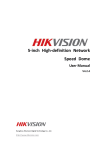
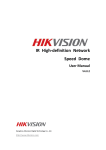
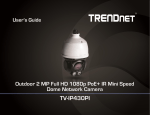
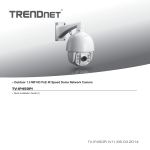

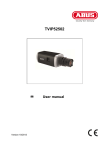

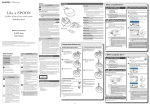
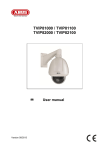
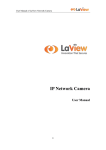
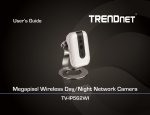
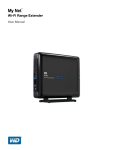
![[PDF:4.7MB]](http://vs1.manualzilla.com/store/data/005740230_1-1ae4d56b6a4c67b9bd1782228090ff43-150x150.png)
